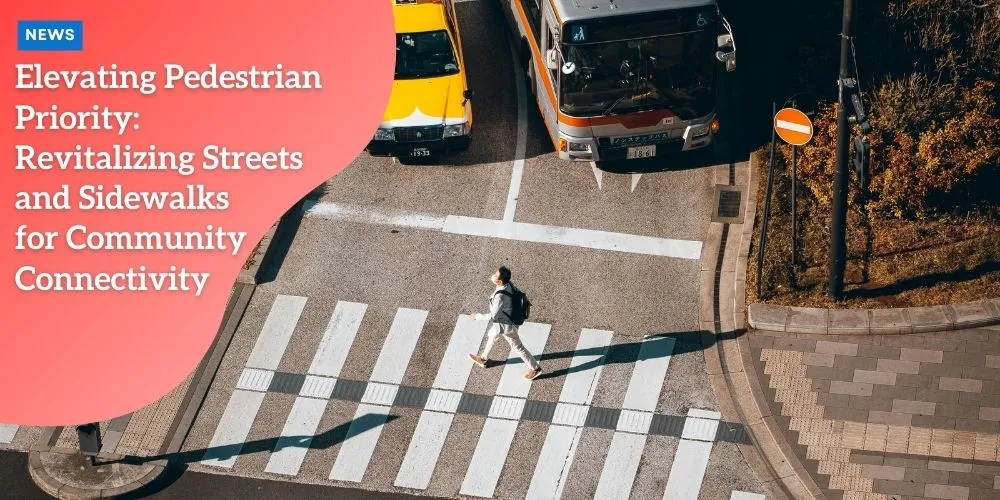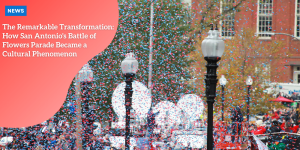Elevating Pedestrian Priority: Revitalizing Streets and Sidewalks for Community Connectivity

Introduction
Imagine a city where the cacophony of engine roars is replaced by the soft hum of lively conversations, where the streets are filled with pedestrians strolling, children laughing, and neighbors exchanging greetings.
Anúncios
This image is far from the typical reality of many urban environments, where streets are primarily designed for cars, pushing pedestrians to the sidelines and diminishing the sense of community.
But what impact has this car-centered approach had on our cities?
In numerous metropolises, the focus has been on ensuring efficient vehicular flow, often at the expense of pedestrian safety and well-being.
Anúncios
Streets are constructed to prioritize vehicles, leaving pedestrians with narrow sidewalks often bordered by fast-moving traffic.
This neglect of pedestrian-friendly infrastructure doesn’t just affect safety—it stifles social interactions, reduces economic opportunities, and limits the potential for vibrant urban life.
However, a fundamental shift in urban design philosophy is emerging, one that places people at the center of the conversation.
Anúncios
This change seeks to reimagine streets as dynamic, people-friendly spaces—places where community life can thrive.
The Importance of Pedestrian-Centric Design
Imagine walking down a neighborhood street that doesn’t just serve as a way to get from one place to another, but is a destination in itself—alive with activity, interactions, and a sense of belonging.
This is the essence of pedestrian-centric design.
It views streets and sidewalks not just as functional infrastructure, but as vital spaces that shape the social and cultural fabric of a city.
Streets and Sidewalks: The Stage for Community Interaction
Streets and sidewalks are far more than passageways; they are the settings for much of urban life.
In a pedestrian-friendly city, streets are designed not just to move people from point A to point B, but to serve as venues for social interaction and connection.
Whether it’s people chatting on park benches, children playing, or neighbors gathering at local shops, the public realm should be a space that invites lingering and community engagement.
When well-designed, these spaces create a sense of ownership and belonging among residents, fostering a stronger community spirit.
Pedestrian Spaces and Social Interaction
Pedestrian-centric spaces also encourage meaningful social interaction.
By creating areas where people can meet, converse, or simply enjoy the environment, cities can nurture stronger relationships among their inhabitants.
Public squares, pedestrian plazas, and car-free zones become vibrant hubs of activity, hosting everything from farmers markets to public performances, neighborhood festivals, or just casual conversations.
These spaces become the backdrop for daily life, offering opportunities for cultural exchange and community bonding, which in turn strengthens social cohesion.
Local Commerce and Economic Vitality
A key benefit of pedestrian-friendly design is its positive impact on local businesses.
When streets are designed to prioritize walking, people are more likely to visit local shops, cafes, and restaurants, which boosts foot traffic and increases economic activity.
Studies have consistently shown that walkable neighborhoods tend to have higher sales and employment rates, as businesses benefit from the consistent stream of potential customers moving through pedestrian-friendly spaces.
In turn, this contributes to a vibrant local economy where small businesses thrive and contribute to the overall vitality of the community.
Well-being and Quality of Life
Walkable neighborhoods also offer significant health benefits.
Encouraging walking as a mode of transportation promotes physical activity, which can help combat the rise in lifestyle-related diseases such as obesity, diabetes, and heart disease.
Moreover, well-designed pedestrian spaces can improve mental well-being by reducing stress and offering calming environments.
Access to green spaces, such as tree-lined streets or nearby parks, further enhances the quality of life, offering residents opportunities for relaxation and leisure within their own neighborhoods.
These health benefits are not just physical; they are emotional and social as well, as communities built around human connection tend to be more resilient, inclusive, and supportive.
Rethinking Street Planning Priorities
For decades, urban planning has been dominated by a car-centric approach, where the primary goal has been to facilitate traffic flow.
This often results in streets that are inhospitable to pedestrians, filled with hazards and inconveniences.
The focus on cars has led to environments where walking can feel unsafe, uncomfortable, or even impossible.
Drawbacks of Traffic-Focused Planning
In cities designed for cars, streets are often designed with little regard for pedestrians.
Narrow sidewalks, unmarked crossings, insufficient lighting, and a lack of benches or public restrooms make walking less inviting and less safe.
The prevalence of cars, speeding traffic, and pollution detracts from the experience of being outdoors, leaving pedestrians feeling disconnected from their surroundings.
This lack of pedestrian-friendly infrastructure not only hampers community interaction but also diminishes the overall livability of urban spaces.
A Paradigm Shift in Urban Design
To address these issues, a paradigm shift in urban design is essential.
It’s time to move away from an exclusive focus on cars and embrace a more holistic approach that prioritizes the needs of pedestrians.
Streets should be viewed as vibrant spaces for people—not just conduits for cars.
By incorporating elements that support walkability, safety, and social engagement, cities can create environments that cater to the needs of all residents, not just those in cars.
Designing Welcoming Spaces
Creating pedestrian-friendly spaces requires careful design and thoughtful intervention.
For example, wider sidewalks allow for easier movement and the possibility for people to gather.
Adding greenery—such as trees, plants, or even green roofs—can improve air quality, reduce urban heat islands, and create more pleasant environments.
Traffic calming measures, such as speed bumps or curb extensions, can also make streets safer for pedestrians by slowing down traffic and making crossings more visible.
In addition, pedestrian crossings, bike lanes, and well-placed public amenities ensure accessibility for all.
Promoting Connectivity and Social Engagement
Well-designed pedestrian streets can foster a stronger sense of connection and community.
Streets that encourage social interaction—through plazas, shared spaces, or organized events—help build a sense of belonging.
Whether it’s people interacting in a café, families attending a local fair, or neighbors simply walking their dogs, pedestrian spaces provide opportunities for these small but meaningful exchanges that make urban life richer and more fulfilling.
Sustainability at the Forefront
Pedestrian-centric design is also aligned with sustainability goals.
By reducing the reliance on cars, walkable neighborhoods help lower carbon emissions, improve air quality, and reduce traffic congestion.
Active transportation modes, such as walking and cycling, become more appealing when streets are designed for people, reducing the environmental impact of urban living.
Moreover, promoting sustainable transport options, such as public transit, biking, or walking, contributes to the creation of cities that are more livable, environmentally friendly, and equitable.
Transforming Streets and Sidewalks
Transforming streets and sidewalks into welcoming, pedestrian-friendly spaces requires a concerted effort from city planners, local governments, and the community.
It involves widening sidewalks, integrating greenery, and incorporating measures that ensure pedestrian safety and accessibility.
By focusing on creating spaces that prioritize people over cars, cities can foster vibrant, sustainable urban environments where residents can live, work, and thrive.
Creating Vibrant and Sustainable Urban Environments
Vibrant streetscapes encourage social interaction, promote sustainable living, and help create a more resilient local economy.
When streets are designed with pedestrians in mind, they become more than just passages—they transform into spaces where people come together, forge connections, and build a sense of community.
This shift not only creates more sustainable cities but also more inspiring and inclusive environments.
Envisioning Tomorrow’s Urban Tapestry
The future of urban design lies in reimagining streets and public spaces as vibrant, interconnected places where community life thrives.
By prioritizing pedestrian needs, cities can create spaces that nurture social ties, promote well-being, and support local economies.
This vision promises healthier, more connected, and more resilient urban environments for generations to come.
Conclusion and Call-to-Action
The shift towards pedestrian-centric urban design is not just a trend—it’s an essential step towards creating vibrant, sustainable communities.
By prioritizing pedestrians, fostering social interaction, and supporting local economies, cities can create environments that enhance the quality of life for all residents.
To achieve this vision, individuals must advocate for pedestrian-friendly policies and participate in community planning initiatives.
We all have a role to play in shaping the future of our cities.
Join the Movement
You can take action by:
- Staying informed about pedestrian-friendly design and local initiatives.
- Advocating for walkable communities with local representatives.
- Joining neighborhood associations or advocacy groups focused on urban design.
- Supporting local businesses by walking or biking to shops and restaurants.
- Documenting and sharing success stories and challenges on social media or blogs.
By engaging in these efforts, individuals can contribute to the creation of vibrant, sustainable urban environments that prioritize people over cars.
Together, we can help create cities that are healthier, more connected, and more vibrant for everyone.





